
Uki Goshi (浮腰) is one of the original 40 throws of Judo as developed by Jigoro Kano. It belongs to the first group, Dai Ikkyo, of the traditional throwing list, Gokyo, of Kodokan Judo. It is also part of the current 67 Throws of Kodokan Judo. It is classified as a hip technique, Koshi-Waza. Uki goshi is known as a favorite throw of Jigoro Kano himself. It is demonstrated in the Nage no Kata. It used to be much drilled in traditional judo dojos.
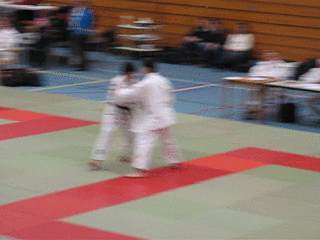
The ippon seoi nage is a throw in judo. It is a variant of Seoi nage, and is one of the nineteen accepted techniques in Shinmeisho No Waza of Kodokan Judo. It is classified as a hand throwing technique, or te-waza.

Tsurikomi Goshi (釣込腰), is one of the original 40 throws of Judo as developed by Jigoro Kano. It belongs to the second group, Dai Nikyo, of the traditional throwing list, Gokyo, of Kodokan Judo. It is also part of the current 67 Throws of Kodokan Judo. It is classified as a hip throwing technique, Koshi-Waza. Tsurikomi Goshi is also one of the 20 techniques in Danzan Ryu's Nage No Te list.

Uki otoshi (浮落), or "floating drop," is one of the traditional forty throws of Judo as developed by Jigoro Kano. It belongs to the fourth group, Dai Yonkyo, of the traditional throwing list, Gokyo-no-Nagewaza, of Kodokan Judo. It is also part of the current 67 Throws of Kodokan Judo. The technique is categorized as a hand technique, Te-waza.
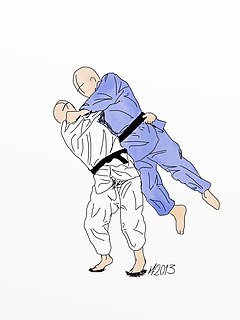
Utsuri Goshi (移腰), or the changing hip throw, is one of the original 40 throws of Judo as developed by Jigoro Kano. It belongs to the fourth group, Yonkyo, of the traditional throwing list, Gokyo-no-Nagewaza, of Kodokan Judo. It is also part of the current 67 Throws of Kodokan Judo. It is classified as a hip technique, Koshi-Waza.

Tai Otoshi (体落), is one of the original 40 throws of Judo as developed by Jigoro Kano.
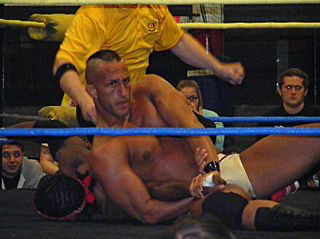
Ude-Hishigi-Waki-Gatame is an armlock and one of the official 29 grappling techniques of Kodokan Judo. It is one of the nine joint techniques of the Kansetsu-waza list, one of the three grappling lists in Judo's Katame-waza enumerating 29 grappling techniques. Falling directly to the mat while applying or attempting to apply the Waki gatame in competition is listed as an Hansoku-make by the International Judo Federation.
Ude-Hishigi-Sankaku-Gatame (腕挫三角固), also referred to as Ao muke gata ude hishigi (背中方腕挫) in the Canon Of Judo, is one of the official 29 grappling techniques of Kodokan Judo. It is one of the nine joint techniques of the Kansetsu-waza list, one of the three grappling lists in Judo's Katame-waza, enumerating 29 grappling techniques, and is also demonstrated by Kyuzo Mifune in the video The Essence of Judo.
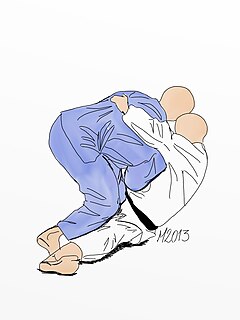
Yoko Otoshi (横落) is one of the original 40 throws of Judo as developed by Jigoro Kano. It belongs to the third group,
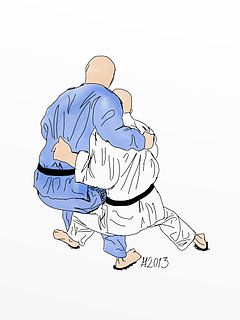
Tani otoshi (谷落) is one of the original 40 throws of Judo as developed by Kano Jigoro. It belongs to the fourth group of the traditional throwing list in the Gokyo no waza of the Kodokan Judo. It is also part of the current 67 Throws of Kodokan Judo. It is classified as a side sacrifice technique (yoko-sutemi).
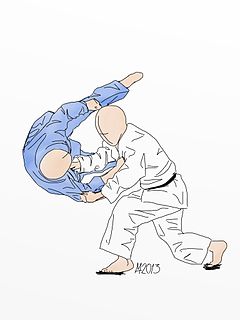
Sumi Otoshi (隅落), is one of the original 40 throws of Judo as developed by Jigoro Kano. It belongs to the fifth group, Gokyo, of the traditional throwing list, Gokyo, of Kodokan Judo. It is also part of the current 67 Throws of Kodokan Judo. It is classified as a hand technique, Te-waza.
Seoi Otoshi (背負落) is one of the preserved throwing techniques, Habukareta Waza, of Judo. It belonged to the fifth group, Gokyo, of the 1895 Gokyo no Waza lists. It is categorized as a hand technique, Te-waza.

Osoto Otoshi (大外落) is one of the preserved throwing techniques, Habukareta Waza, of Judo. It belonged to the fourth group, Yonkyo, of the 1895 Gokyo no Waza lists. It is categorized as a foot technique, Ashi-waza.
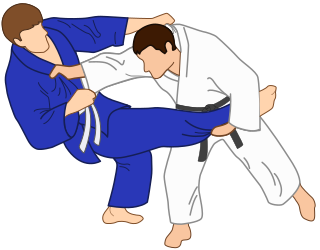
Kibisu gaeshi (踵返) is a single leg takedown or "Ankle Pick" adopted later by the Kodokan into their Shinmeisho No Waza list. It is categorized as a hand technique, Te-waza.
Kuchiki taoshi (朽木倒) is a single leg takedown in Judo adopted later by the Kodokan into their Shinmeisho No Waza list. It is categorized as a hand technique, Te-waza.
The Nage-waza ura-no-kata is a judo kata that, like the Gonosen-no-kata, focuses on counter-attacks to throwing techniques. It was developed by Mifune Kyūzō, and is not an officially recognized Kodokan kata.












